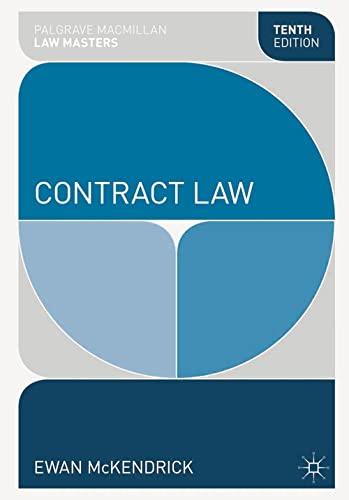Question
(b) Respondents' mark is unquestionably valuable, and petitioners have not challenged the conclusion that it is famous. Nor do they contend that protection is confined
(b) Respondents' mark is unquestionably valuable, and petitioners have not challenged the conclusion that it is "famous." Nor do they contend that protection is confined to identical uses of famous marks or that the statute should be construed more narrowly in a case such as this. They do contend, however, that the statute requires proof of actual harm, rather than mere "likelihood" of harm. The contrast between the state statutes and the federal statute sheds light on this precise question. The former repeatedly refer to a "likelihood" of harm, rather than a completed harm, but the FTDA provides relief if another's commercial use of a mark or trade name "causes dilutionof the [mark's] distinctive quality," 1125(c)(1) (emphasis added). Thus, it unambiguously requires an actual dilution showing. This conclusion is confirmed by the FTDA's "dilution" definition itself, 1127. That does not mean that the consequences of dilution, such as an actual loss of sales or profits, must also be proved. This Court disagrees with the Fourth Circuit'sRingling Bros.decision to the extent it suggests otherwise, but agrees with that court's conclusion that, at least where the marks at issue are not identical, the mere fact that consumers mentally associate the junior user's mark with a famous mark is not sufficient to establish actionable dilution. Such association will not necessarily reduce the famous mark's capacity to identify its owner's goods, the FTDA's dilution requirement. Pp. 432-434.
1. Is demand for red meat in the developing country
income elastic or income inelastic?
2. What evidence is there to suggest that red meat in this
developing country is a luxury good?
3. What is meant by the term 'mixed economy'?
4. What is meant by mixed ownership in this case?
5. Discuss why the government wants to accelerate the
privatisation process in China. Include two reasons in
your answer.
6.Assess one possible difficulty that might be
encountered when encouraging the private sector to
get involved in the running of SOEs in China.
7..Discuss the methods used by the Chinese government
to reduce external costs.
8. Suggest two possible examples of specialist workers at
Red Carnation Hotels.
9. Describe one advantage of employing specialist
workers.final 70
10. Discuss the importance of training at Red Carnation
Hotels.
Step by Step Solution
There are 3 Steps involved in it
Step: 1

Get Instant Access to Expert-Tailored Solutions
See step-by-step solutions with expert insights and AI powered tools for academic success
Step: 2

Step: 3

Ace Your Homework with AI
Get the answers you need in no time with our AI-driven, step-by-step assistance
Get Started


